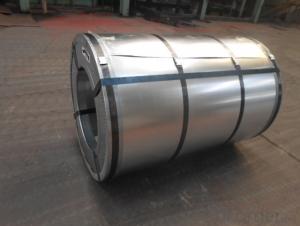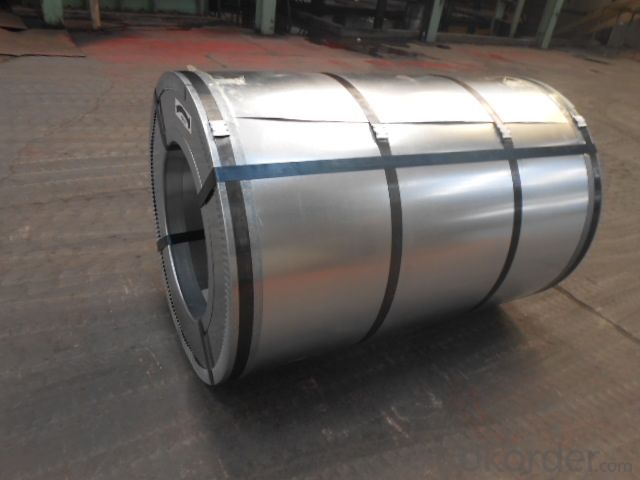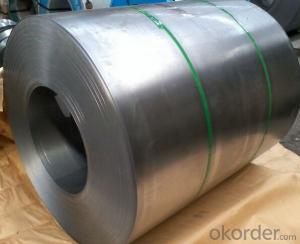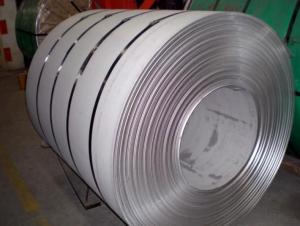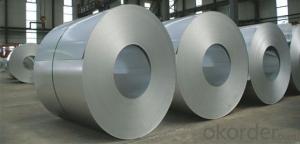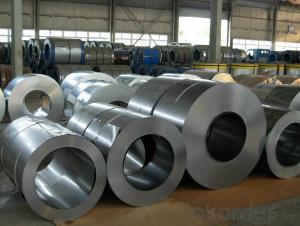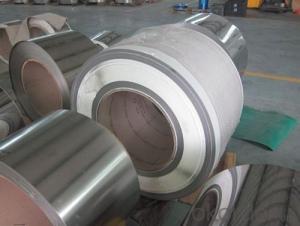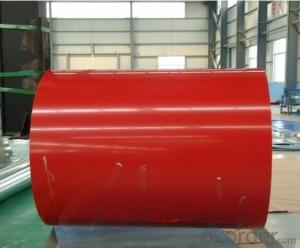Cold Rolled Steel Coil with High Quality
- Loading Port:
- Shanghai
- Payment Terms:
- TT OR LC
- Min Order Qty:
- 100 m.t.
- Supply Capability:
- 20000 m.t./month
OKorder Service Pledge
OKorder Financial Service
You Might Also Like
1.Structure of Cold Rolled Steel Description:
The raw material of cold rolled steel coil/sheet is high quality hot rolled product, and after pickling continuous rolling, degreasing, annealing,skin pass,slitting and cut to length line etc. Along with it many kinds of new technology and new process of global cold rolling production have been applied. Therefore the quality of the goods could be guaranteed. The product is widely used in outdoor and interior decoration, furnishing manufacturing, home appliance, automobile etc.
2.Main Features of the Cold Rolled Steel:
• Excellent process capability
• Smooth and flat surface
• Workability, durability
• Excellent heat resistance performance
• High strength
• Good formability
• Good visual effect
3.Cold Rolled Steel Images
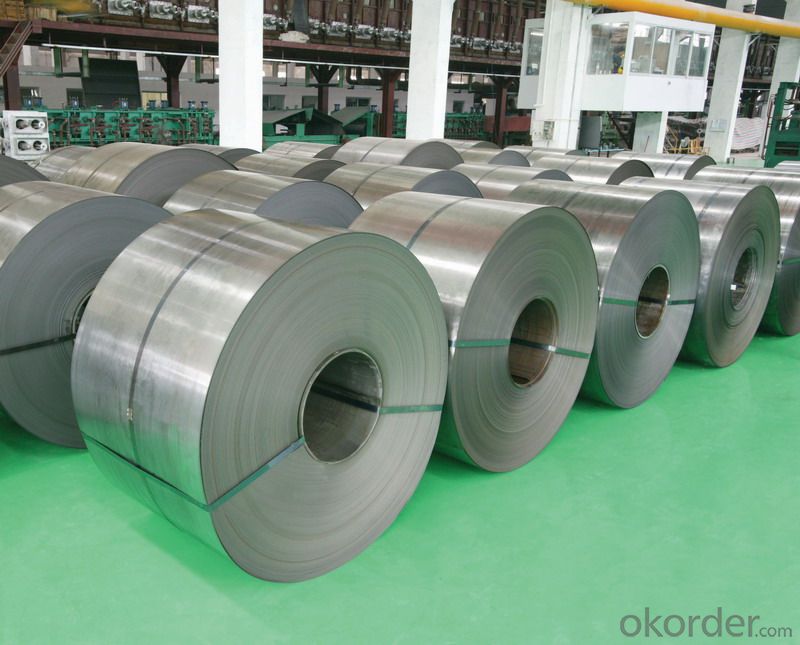
4.Cold Rolled Steel Specification
Standard:AISI,ASTM,DIN,GB,JIS,JIS G3302 ASTM 653M EN10142
Grade: Q195~Q345
Thickness: 0.16mm~1.5mm,0.16-1.5mm
Width: 1250,600-1250mm
Coil weight:3-12 MT
Coil ID:508/610mm
Chemical composition:
C | Si | Mn | Cr | Ni | P | S |
0.150 | 0.476 | 11.231 | 12.50 | 0.900 | 0.039 | 0.010
|
5.FAQ of Cold Rolled Steel
We have organized several common questions for our clients,may help you sincerely:
1.How about your company?
A world class manufacturer & supplier of castings forging in carbon steel and alloy steel,is one of the large-scale professional investment casting production bases in China,consisting of both casting foundry forging and machining factory. Annually more than 8000 tons Precision casting and forging parts are exported to markets in Europe,America and Japan. OEM casting and forging service available according to customer’s requirements.
2.How to guarantee the quality of the products?
We have established the international advanced quality management system,every link from raw material to final product we have strict quality test;We resolutely put an end to unqualified products flowing into the market. At the same time, we will provide necessary follow-up service assurance.
3. How long can we receive the product after purchase?
Usually within thirty working days after receiving buyer’s advance payment or LC. We will arrange the factory manufacturing as soon as possible. The cargo readiness usually takes 15-25 days, but the shipment will depend on the vessel situation.
- Q: A friends of mine says he has balls of steel and i told him i would melt em off with lava. He said it wouldnt work. i disagree
- united is right! its hard to tell the temp... Because lava is not just obsidian, or pillow lava... its several different types of elements. It just depend on ground chemistry.
- Q: How are steel coils used in the production of roofing systems?
- The production of roofing systems involves the utilization of steel coils in various ways. Initially, the steel coils undergo unrolling and are then fed into a machine, where they are cut to the desired length for the roofing panels. Typically, these coils are composed of galvanized steel, which is coated with a layer of zinc to protect against rust and corrosion. Once the coils have been cut, they are subsequently passed through a roll-forming machine. This machine is responsible for shaping the steel into the necessary profile for the roofing panels. The specific shape of the panels may differ depending on the design and functionality of the roofing system. Following the formation of the steel, it may undergo additional processes, such as embossing or stamping, to incorporate texture or patterns onto the panels. This aids in enhancing the visual appeal of the roofing system and providing it with a distinct appearance. After the steel panels have been formed and processed, they are coated with supplementary protective layers or finishes, such as paint or polymer coatings. These coatings further augment the durability of the roofing system and offer resistance against weather elements, UV rays, and corrosion. The final step in the production of roofing systems entails the installation of the steel panels on the roof. Typically, the panels are secured to the roof structure using screws or nails. The panels are designed to interlock, ensuring a secure and watertight installation that safeguards against leaks and moisture infiltration. In conclusion, steel coils play a vital role in the production of roofing systems, providing a durable and long-lasting material that can withstand harsh environmental conditions. The versatility of steel permits various design options and customization, making it a favored choice for roofing applications.
- Q: Can steel coils be coated with anti-fingerprint materials?
- Yes, steel coils can be coated with anti-fingerprint materials. These coatings are designed to minimize fingerprint smudging and make the surface easier to clean, improving the appearance and functionality of the steel coils.
- Q: days. Use your knowledge of the corrosion of steel and aluminum to predict how they would look different after a week exposed to rainy weather. Explain your prediction.
- Steel rusts, aluminum doesn't so the steel can would be rusty and the aluminum can would not.
- Q: What are the different surface treatments available for steel coils?
- There are various surface treatments available for steel coils, including hot-dip galvanizing, electro-galvanizing, zinc plating, painting, powder coating, and organic coating.
- Q: can steel boil and turn into a gaseous state?? if so how hot does it have to be for it to boil
- The amount of heat needed can be generated. The heat on the surface of the sun is sufficient. Steel will break down before it gets that hot. The carbon in the steel will oxidize into carbon dioxide, or vaporize into carbon gas. The outer core of the Earth is composed of molten iron and nickel. Its also done in steel plants every day.
- Q: What are the different types of steel coil finishes?
- There are several different types of steel coil finishes, including mill finish, galvanized finish, painted finish, and stainless steel finish.
- Q: How are steel coils used in the manufacturing of flooring materials?
- Steel coils are used in the manufacturing of flooring materials as they provide strength and durability to the flooring. The steel coils are often used as a base material for various types of flooring, such as vinyl, laminate, or engineered wood. These coils are processed and shaped into sheets or panels, providing a stable and sturdy foundation for the flooring materials. Additionally, the steel coils are also used for reinforcing concrete flooring, adding extra strength and preventing cracks or damage.
- Q: Does SA use its own iron ore to produce steel for construction or do we rely on imports?
- Then people like Bull tell you the country is going down yet Lakshmi and Mark Mobius(read last week's FM) show confidence in SA. Sieman, IBM and CNBC are investing millions in the country. Now who do believe?
- Q: How do steel coil manufacturers handle international shipping requirements?
- Steel coil manufacturers ensure that their products meet transportation standards and regulations for international shipping. This involves following specific packaging requirements, using appropriate containers, and securing the coils to prevent damage during transit. In order to meet international shipping requirements, manufacturers must also comply with customs regulations and documentation. They need to prepare accurate and complete paperwork, such as commercial invoices, packing lists, and bills of lading, to ensure smooth customs clearance procedures. Furthermore, steel coil manufacturers often collaborate with freight forwarders or shipping agents who specialize in international logistics. These professionals have extensive knowledge of shipping regulations, routes, and carriers, and can assist with arranging transportation, negotiating freight rates, and handling necessary paperwork. Manufacturers may also choose to use intermodal transportation, which involves utilizing multiple modes of transportation like trucks, trains, and ships. This allows for more efficient and cost-effective shipping, especially for long-distance or international shipments. Additionally, steel coil manufacturers may consider obtaining insurance coverage to protect their products during transit. Insurance provides financial compensation in case of any damage, loss, or delays during the shipping process. Overall, steel coil manufacturers handle international shipping requirements through careful planning, adherence to regulations, collaboration with logistics experts, and consideration of various transportation options. This ensures that their products reach international destinations safely, on time, and in compliance with all relevant regulations.
Send your message to us
Cold Rolled Steel Coil with High Quality
- Loading Port:
- Shanghai
- Payment Terms:
- TT OR LC
- Min Order Qty:
- 100 m.t.
- Supply Capability:
- 20000 m.t./month
OKorder Service Pledge
OKorder Financial Service
Similar products
Hot products
Hot Searches
Related keywords
